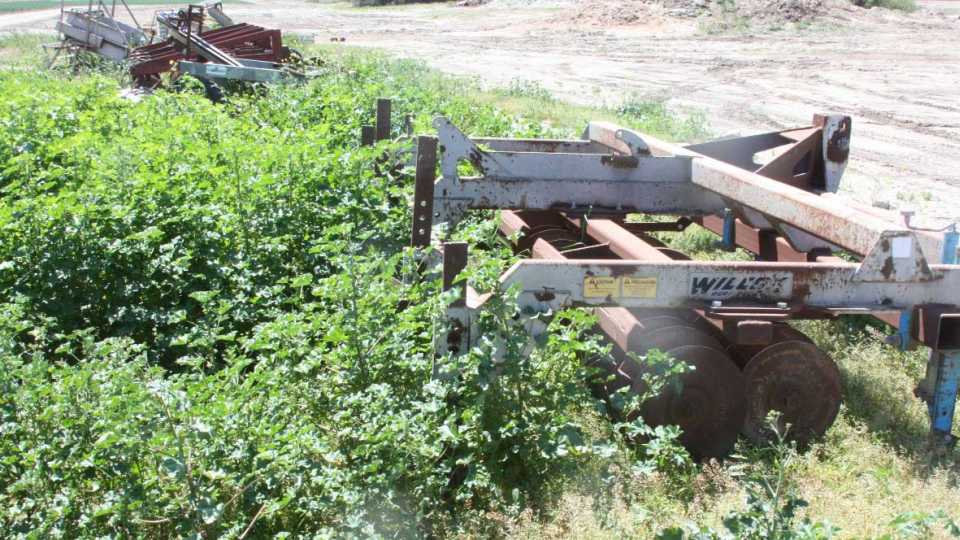How to Manage Impatiens Necrotic Spot Virus in Lettuce
2020 is off to a difficult start in the Salinas Valley. Everyone is aware of the challenges to human health caused by the COVID-19 virus pandemic. Although everyone must eat, and agriculture is an essential industry on which society depends, the produce industry has had difficulties addressing this challenge.
Disruptions in the food service industry caused operations serving that sector of the industry to reel as their markets quickly vanished when shelter-in-place orders spread across the country to slow the spread of the virus. Growers selling to retail outlets were less hard-hit, but disruptions in the distribution chains also caused sporadic difficulties.
A big concern as of this writing has been the health of the labor force that grows, picks, packs, and ships the produce. As a result, all operations have instituted social distancing in field operations to minimize person-to-person spread of the COVID-19 virus. It is hoped that these efforts prove successful.
Lettuce Growers’ Viral Challenge
As if a viral pandemic affecting human health and economic viability was not enough, lettuce growers in the Salinas Valley have another viral challenge to contend with: impatiens necrotic spot virus (INSV). Here, the virus is spread primarily by western flower thrips (Frankliniella occidentalis) and has a wide host range of more than 600 species of plants, including vegetables like lettuce, tomatoes, and peppers;
ornamental such as fuchsias, dahlias, and gazanias; and weeds — including purslane, sow thistle, and lambsquarters.
The large host range makes it difficult to conduct “social distancing” of the INSV hosts and vegetable production fields. This is particularly true in the summer when the virus is well established. Lettuce production fields become one of the primary hosts of the virus and controlling the thrips is the only strategy to manage this disease.
Thrips are controlled by predators such as predaceous mites, minute pirate bugs, and lacewings. However, insecticides kill these predators, so you may not find them in treated fields. Maddeningly, controlling thrips with insecticides can also be difficult when their populations are high. They migrate in large numbers from adjacent harvested fields.
A key aspect for controlling INSV is breaking the life cycle during winter when insect populations are lower and host plants are less available. University of California Cooperative Extension Entomologist Alejandro Del Pozo-Valdivia maintains year-round thrips monitoring stations up and down the Salinas Valley and has found that thrips are active in all parts of the Valley year-round. The population dips in the winter months but quickly builds up to high levels spring through fall.
Watch for Annual Weeds
Given that thrips populations are always active, controlling host plants during the winter is a key strategy.
USDA ARS Research Entomologist Daniel Hasegawa has examined susceptibility of key weeds to INSV and has found many cool- and warm-season annual weeds are good hosts for INSV. Cool-season INSV weed hosts include sow thistle, shepherd’s purse, and burning nettle; warm-season INSV weed hosts include common purslane, lambsquarter, nettleleaf goosefoot, and short-pod mustard. Perennial plants that live from one season to the next such as little mallow (a weak perennial) and field bindweed were also found to be good INSV hosts.
In California, many of the host plants have dried up by the fall, and the new generation of weeds (and host plants) don’t germinate until the rains in the late fall/winter. For the virus to live and infest the new year, it must bridge from the previous fall to the next spring. It does this by living in the perennial weeds mentioned above, as well as in annual cool-season weeds that hunker down and survive in equipment, yards, ditch banks, roadsides, industrial areas, and in other crops such as vineyards and strawberries.

Equipment yards are areas where impatiens necrotic spot virus host plants such as little mallow can over winter.
Photo by Richard Smith
Goal: Break Winter Infection Cycle
Given that thrips are active in the winter, INSV host plants that survive over the winter serve as primary sources infecting the new generation of weeds that sprout and grow in the spring. As Hasegawa puts it, if we could control the winter host plants, we could “bend the curve” on INSV infection in the spring.
That said, given the number of habitats, both natural and agricultural, it has been very challenging to reduce INSV infection by breaking the winter infection cycle.
INSV infections in lettuce fields vary year to year. 2019 was particularly devastating in the north end of the Salinas Valley. The use of varieties with tolerance or resistance to INSV is an area that holds a great deal of promise for managing INSV infection on lettuce.
Resistant Varieties Show Promise
Kelley Richardson, a USDA ARS lettuce breeder, has been evaluating varieties and breeding lines for resistance to INSV. In 2018 and 2019, due to high INSV pressure at the USDA research station, she was able to conduct field evaluations of many varieties and breeding lines.
She observed that several lines have useful levels of resistance to INSV. The mechanism for resistance is not clear, but one possibility is a connection between thrips’ feeding preferences and INSV resistance. At this point, none of the lines have 100% resistance, but Kelley is hopeful that the tolerance/resistance to INSV that exists may provide at least a partial solution to this problem soon.
Vegetable growers have confronted many production challenges over the years, and they have been progressive and innovative in addressing the issues and successfully producing crops. These virus problems have solutions, and growers are adapting to the challenge. Keeping the farming community healthy and keeping crops healthy during this pandemic are tough, but solvable, problems.











